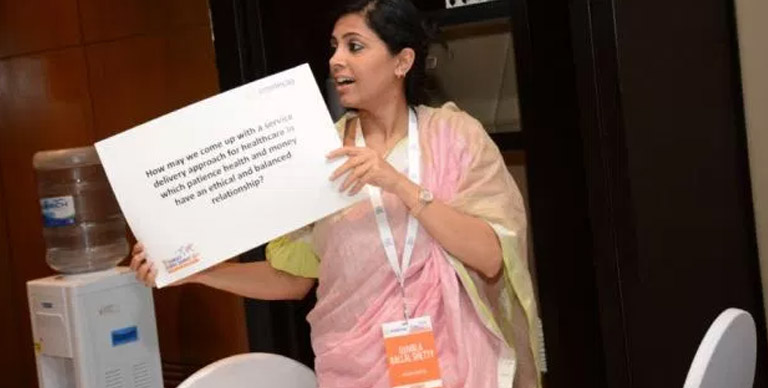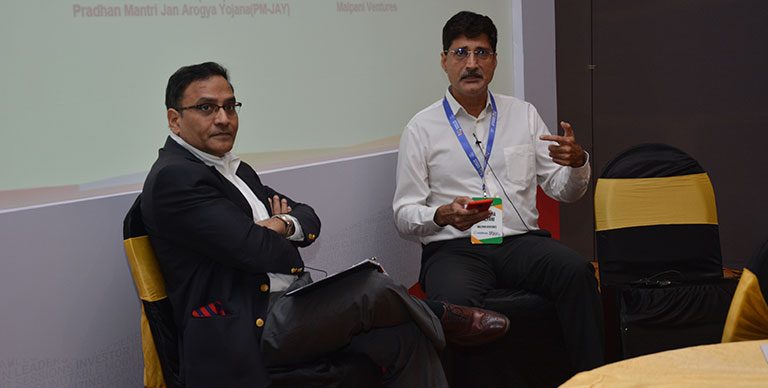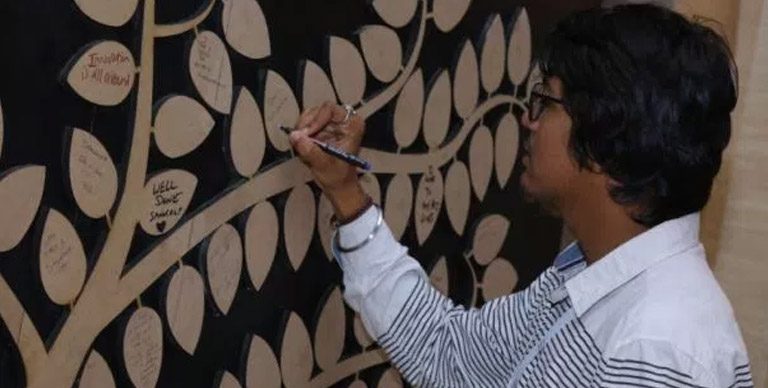How do we design a health economy that prioritizes well-being for all? – Excerpts from 9th Sankalp Global Summit 17
(Excerpts from the track on Future of Healthcare at the 9th Sankalp Global Summit held in December 2017)
World over, health care providers and governments are struggling to find the balance between making progress and developing solutions to improve access and quality of care while controlling costs. We need to shift from the break-fix model of health care to one that is focused on prevention and overall well being of populations rather than episodic and transaction based treatments. High cost of care on one side and growing and aging population, with an increasingly unhealthy lifestyle and unfavorable environmental conditions on the other, are sure to increase the pressure on making affordable and quality healthcare delivery possible.
At 9th Sankalp Summit, coveted healthcare providers, entrepreneurs and key stakeholders across healthcare lifecycle deliberated on building a moral health economy in India, one that ensures inclusiveness and wellbeing for all.
Building a moral health economy
The fundamental question staring at the healthcare industry and entrepreneurs today is how to be financially viable without compromising on the quality of service and continuous value addition to the patients. Doctors are trained to look for diseases rather than creating awareness around its prevention and there is an urgent need to make available trustworthy information on service offerings.
Aniruddha Malpani, Director and Founder, Malpani Ventures made a valid observation that today healthcare is an illness care system. There is lack of trust and the industry is uncaring. This is also because of the fact that realistically there are far less doctors than patients and hence the overwhelming demand and supply gap. It’s a supply induced demand.
Need of the hour is to focus on preventive healthcare emphasized Shama Karkal, CEO, Swasti. In developing countries, health is not prioritized until there is an illness. Healthcare provision has become reactive and designed to deal with patients and not potential suspects, thereby dealing only with patients who seek treatment. It is designed to work in the present with little focus on future. The means to reach those who are high risk and bring them proactively under the healthcare umbrella remain limited at this stage. So how do we collectively make this more inclusive?
If there is a dismal inequity in what is accessible, there is also an acute skill shortage. Health care systems around the world are stressed and unable to keep up with the growing demand. Over 44 percent of WHO Member States report to have less than 1 physician per 1000 population. The patient to bed ratio in India is far below the global average and the healthcare worker’s shortage runs in millions. While technology could play the biggest role in transformation, it is not seen as value. It’s considered a cost and not an investment. Varun Khanna, Co-Chair, FICCI Health Services Committee commented that large corporates are not investing in healthcare owing to three vital gaps in the ecosystem, namely, access, skillset and technology.
The pertinent question here is how industry bodies can provide more transparency. Specialist doctors are not doing enough to raise awareness amongst patients which if done can bring about significant change. Taking SEBIs example, Dr. Malpani quoted just as SEBI makes it mandatory for mutual funds to educate investors, why can’t the IRDA make it compulsory for health insurers to educate patients. A valid and powerful question and the answer to the same lies within our healthcare system. How much accountability, we as healthcare providers and regulators are willing to seek? A long term approach to informed healthcare system may require short term tradeoffs in terms of revenues, longer gestation periods for organizations & businesses but has the potential to create a more stable and long lasting healthcare ecosystem. It also requires us to explore the role of the Government or the state in the healthcare delivery system. Is state only an enabler, infrastructure provider or is the state the catalyst that should be the key driver in evolution of healthcare. The answer to this lies in understanding and evolving the various health financing options that currently exist in our country.








